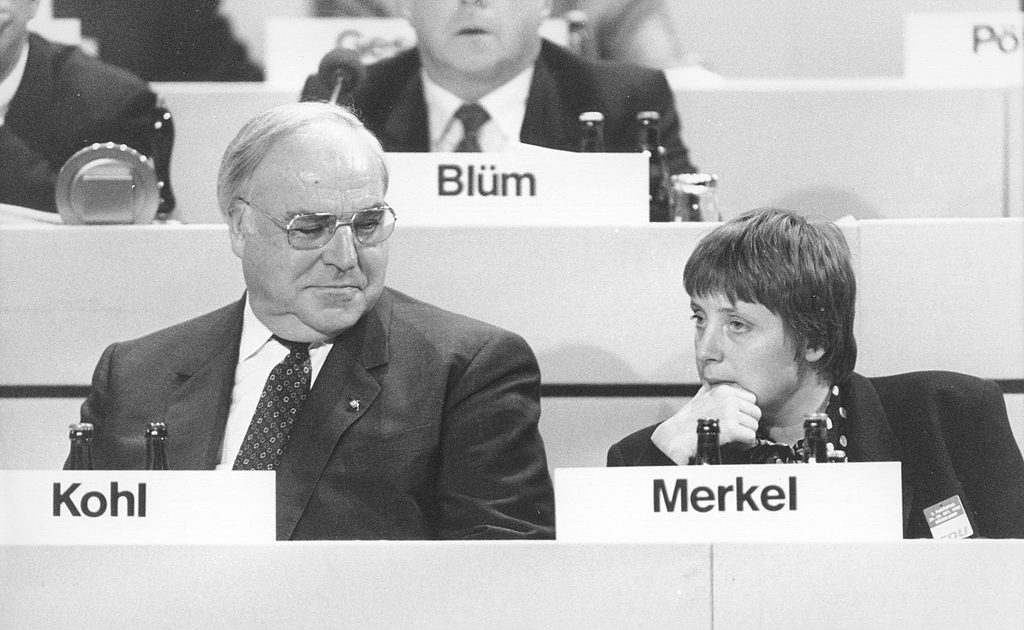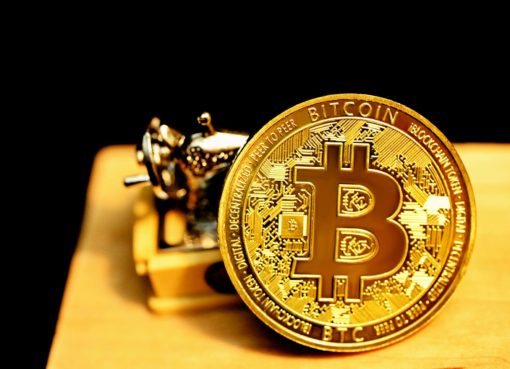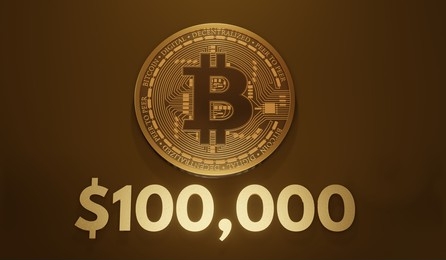Germany is in political crisis. The Alternative for Germany (AfD), a far-right political party, began to rocket in opinion polls last spring. After it entered the federal parliament in 2017—the first time a far-right party had been elected since the 1950s—the party seemed to stall around 10% of the electorate. But no more: the AfD currently sits at around 22%, making it the second most popular bloc in the country. It has also done well in recent regional elections, and Germans are increasingly fearful of how the party will fare in federal elections in 2025. After recent reports that the party hopes to deport “unassimilated” German citizens, large pro democracy demonstrations swelled in cities across the country.
Since the AfD first rose to prominence, pundits have sought to explain the rise of a far-right party (that some compare to neo-Nazis) in the land that Adolf Hitler once ruled. The country worked hard in the postwar decades to cordon off this kind of political formation, to teach its citizens that such groups were beyond the pale. In consternation, many have pointed to proximate causes to help explain the party’s successes.
But only by looking at the longer history of postwar German democracy can we understand why one of the greatest democratic success stories of the 20th century is now, for the second time in a century, taking a hard turn toward a party hostile to democracy. By prioritizing stable consensus at the expense of political choice, post-Nazi democracy left itself vulnerable to parties such as the AfD that, in times of crisis, could claim to offer genuine alternatives to that narrow status quo.
Read More: Yes, Merkel Won Again. But the Fires of European Populism Are Still Raging
The political norms that took root in West Germany after World War II set the stage for recent developments in German politics. The Weimar Republic, Germany’s first experiment in democracy, had ended with the Nazi seizure of power. Scarred by that failure, and fearful of encroaching communism, German politicians and the Western Allies crafted a new order from the rubble, which, they hoped, would avoid the chaotic excess of Weimar.
Between 1945 and 1949, the period when the four Allied powers occupied Germany, Allied leaders set artificial limits on political discourse. They privileged parties of the center while either banning or harassing those on the political extremes. The Social Democratic Party, Germany’s oldest political bloc, moved toward the center. It formally dropped Marxist ideology from its party platform in 1959 and hewed to the course of Cold War liberalism. Economic technocrats designed and safeguarded the country’s famed social market economy, a regulated capitalist system that sought to ensure a basic standard of living. There were differences among parties and politicians, to be sure, but gone were the raucous politics of the 1920s. West German leaders and their Allied partners valued democracy in form more than function, stable consensus over political choice.
West German politics stayed the course for decades. Between 1961 and 1983, only three parties won seats in the federal parliament. And voters tended to favor continuity between administrations. The center-right Christian Democratic Union (CDU) won the most votes in every election but one between 1949 and 1990. West Germany’s first chancellor, the conservative Konrad Adenauer, won a landslide reelection in 1957—the greatest electoral showing of any party ever in German history—while running under the slogan “No Experiments!” Parties deemed beyond the mainstream, such as the Communist Party, were banned by the government.
When the conservative Helmut Kohl took office as chancellor in 1982—after a dramatic parliamentary showdown with then-chancellor Helmut Schmidt—he did not embark on the kind of radical cost-cutting neoliberal reforms that his contemporaries Margaret Thatcher and Ronald Reagan did. West Germany’s commitment to consensus, that is, limited the horizons of political possibility, but also promoted stability and continuity of policy.
But prizing dull consensus also meant the suppression of necessary conversations. For decades after World War II, contemporaries spoke about the stultifying silence surrounding the Holocaust and Nazi Germany’s other crimes. The famed sociologist Ralf Dahrendorf, a survivor of the concentration camps, described West German society as suffering from a “syndrome of murder” and a “virus of inhumanity.” Marginalized groups continued to face persecution: over 50,000 queer men were convicted in the country’s first 20 years under a Nazi-era law. The desire to forge a postwar consensus that included millions of former Nazis elided any systematic reckoning with the fascist past and allowed for the endurance of systematic harms. Indeed, the German parliament only scrubbed a Nazi-era abortion law from its books last year.
Read More: Germany’s QAnon-Inspired Plot Shows How Coup Conspiracies Are Going Global
Protected by the American security aegis, confident that it had overcome the ghosts of its fascist past, and generous in its support of a modern welfare state, West Germany’s postwar consensus held firm for decades. The bargain that politicians—and the postwar occupation forces—had struck was this: a comfortable existence in exchange for a vacated political sphere.
But the end of the Cold War unsettled that bargain.
After East Berliners breached their fortified border on Nov. 9, 1989, Kohl’s government moved quickly to absorb what was once East Germany into West Germany. But the euphoria of reunification quickly soured, as masses of East Germans lost their jobs and West Germans groused about the money that they were being asked to pony up to help rebuild the new states. Under economic pressure, the center-left government of Gerhard Schröder rammed through a package of neoliberal reforms in the early 2000s, slashing the country’s social safety net.
Even as the economic side of the postwar bargain began to fray, the German political sphere did not diversify. Of course, these changes were not entirely unique to Germany: neoliberal legislation enacted in large, industrialized countries from the 1980s onward have often had the effect of hollowing out the political sphere by applying market rationalities to political decision making. For decades, thinkers around the world have pointed to the politically destabilizing effects of such policies. Yet by eroding trust in government and the status quo, they create space for parties like the AfD.
But German pundits have often looked elsewhere to explain the party’s rise. Some point to the Syrian refugee crisis of the 2010s. The government of then-Chancellor Angela Merkel helped settle some 800,000 asylum seekers in the country, spawning a xenophobic, populist backlash. Others looked to the party’s unusual strength in the federal states that used to make up East Germany, suggesting that disappointment with reunification may be spurring protest votes for the party. More recently, journalists have underscored the party’s unusual popularity on TikTok and among younger German voters.
Still others have looked to the nature of German politics during Merkel’s 16 years in office. The second-longest-serving chancellor in postwar Germany (Helmut Kohl edges her out by 10 days), Merkel was long seen as a symbol of stability, a “civil servant-in-chief, floating above parties.” Moderation and consensus were her watchwords; like her West German predecessors, she rarely took action precipitately and she typically strove to get the other mainstream parties on board with her policies.
But what made Merkel a source of stability, some contend, is what offered the AfD an opening. By charting a middle course, Merkel both moved her own center-right CDU leftwards, thereby creating an opening on its rightward flank, and functionally made the mainstream parties all seem more or less the same—even more than they had in decades past. Her years in power were a period of stability, yes, but also of stagnation and, frankly, boredom. With most of the large parties on board with the Pax Merkelana, frustrated voters turned, in this telling, to the only true “alternative” left.
But Merkel’s dull, consensus-driven politics did not originate with her.
What sets Germany apart from the rest of Western Europe is just how long the political sphere has been vacant. Since the 1920s, German voters have rarely been offered sustained alternatives to the mainstream consensus. The recent pro-democracy rallies are indeed heartening. But it remains to be seen if they will change anything in a country in which the ostensibly pro-democratic parties recently signed off on a suite of new anti-immigrant policies and have been cracking down on speech critical of Israel. So long as the main parties continue to hew the line, so long as they are seen as faces of the same status quo, they may continue to cede ground to the only genuine “alternative” in German politics—no matter how horrifying that alternative is.
Samuel Huneke is a historian of modern Germany and assistant professor of history at George Mason University.
Made by History takes readers beyond the headlines with articles written and edited by professional historians. Learn more about Made by History at TIME here. Opinions expressed do not necessarily reflect the views of TIME editors.




